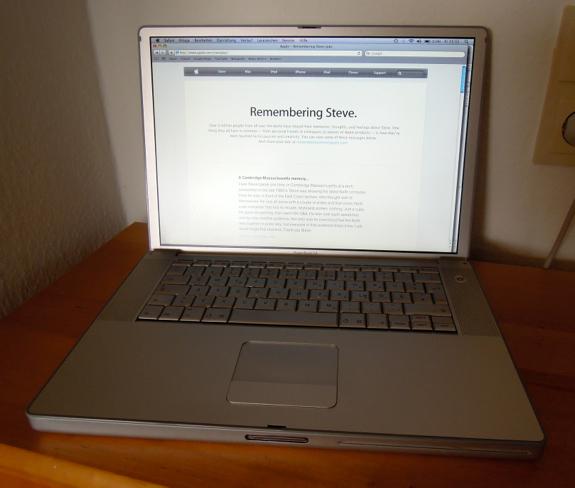 Another year has passed since Steve Jobs succumbed to cancer on October 5, 2011. Just a few weeks before that, Steve Jobs announced that he would no longer be able to perform his duties at Apple. This does not seem to have affected Apple's success since then, as the iPhone 5 is once again selling like hotcakes. However, Steve Jobs was still personally involved in the development of the current iPhone. Time for a little timeline in the form of a series of photos of previously current Apple mobile devices that the Apple CEO has launched since his return to Apple.
Another year has passed since Steve Jobs succumbed to cancer on October 5, 2011. Just a few weeks before that, Steve Jobs announced that he would no longer be able to perform his duties at Apple. This does not seem to have affected Apple's success since then, as the iPhone 5 is once again selling like hotcakes. However, Steve Jobs was still personally involved in the development of the current iPhone. Time for a little timeline in the form of a series of photos of previously current Apple mobile devices that the Apple CEO has launched since his return to Apple.
From the PowerBook G3 to the iPad
When the PowerBook G3 was currently on the market, Apple bought Steve Jobs' company NeXT and promptly appointed Steve as temporary CEO of the company. Steve Jobs initially pushed the development of Mac OS X based on NeXT Step, and this was followed by the three other PowerBook G3s "Wallstreet", "Lombard" and "Pismo".

Steve Jobs introduced the iMac at the beginning of his career in 1998, followed shortly afterwards by the iBook G3. The iBook in particular stood out visually, but this also led to controversial discussions and gave the notebook the unflattering nickname "toilet lid notebook".

The following iBook G3 already looked very similar to the later MacBook, as did the iBook G4, which later came onto the market with the more modern G4 processor. The iBook G4 was a very popular notebook and was available with a 12″ or 14″ display.

The PowerBook G4 already came in an aluminum case that looked very similar to the later MacBook Pro. This series was manufactured with 15″, 17″ and 12″ displays - to the chagrin of many users, Apple discontinued production of the 12″ device after the release of the Intel-based MacBook Pro, so that initially only the MacBook was available with a 13″ display.

The MacBook Pro available after the switch to Intel processors was visually a further development of the previously available PowerBook G4. The casing of the MacBook Pro was even thinner and the trackpad was larger to allow gesture control via the trackpad. In the first few months, the MacBook Pro was only available with a glossy display, much to the annoyance of many users.

After Apple had already introduced the iPhone in 2007, the first iPad followed in January 2010 - a tablet computer that ran on the iPhone operating system iOS. Both the iPhone and iPad are still a great success for Apple today, and Steve Jobs was particularly proud of them.

Remembering Steve.
With this small series of photos, I would like to commemorate Steve Jobs and thank him for his tireless efforts to make his products as effective as possible for people to use. In retrospect, we can see that he actually succeeded in doing this with most of his products.
More beautiful obituaries for Steve Jobs can be found here:
A year without Steve Jobs: Was Tim Cook the right choice?
A day full of sadness - we miss the "one more thing"